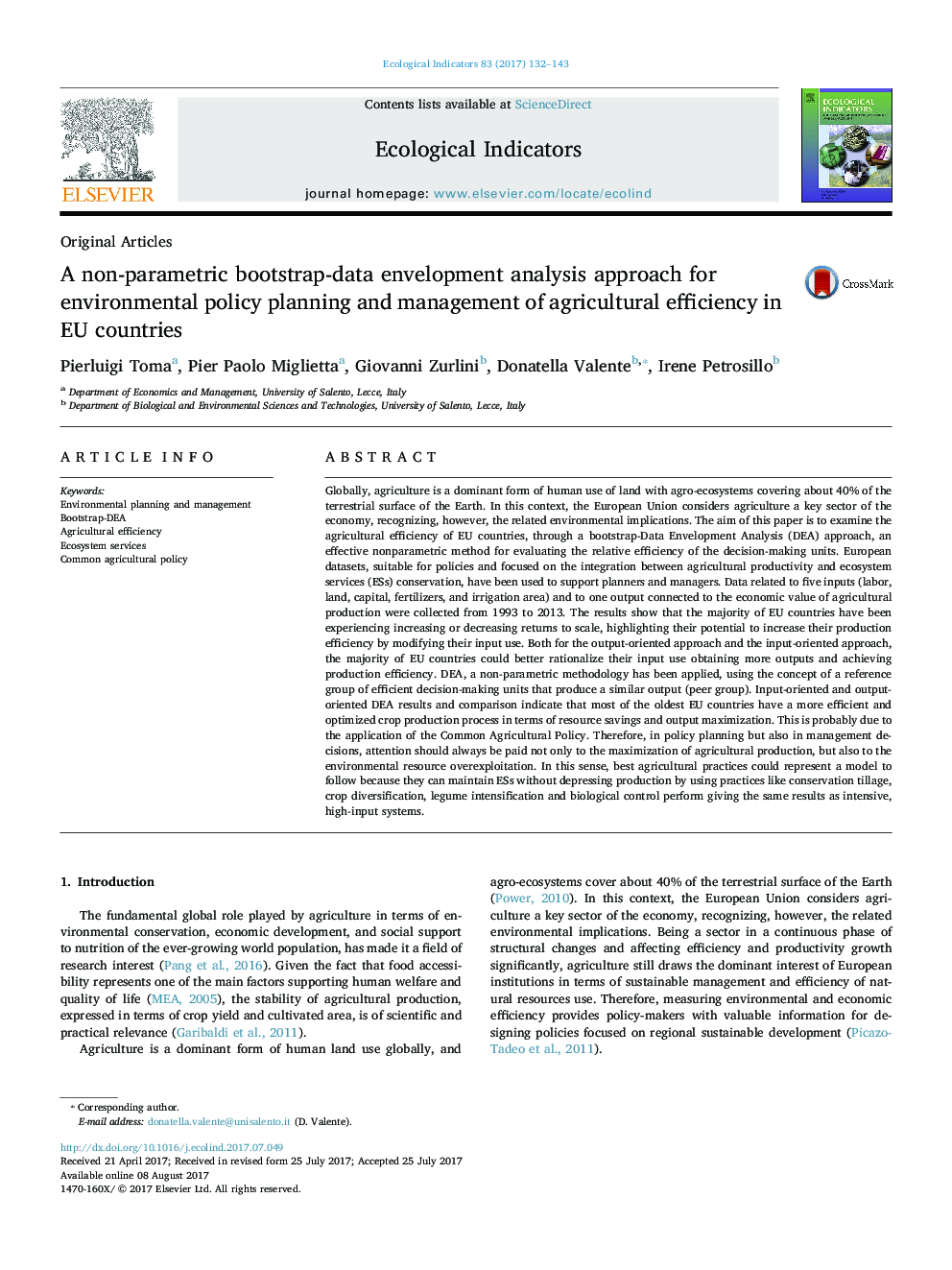| کد مقاله | کد نشریه | سال انتشار | مقاله انگلیسی | نسخه تمام متن |
|---|---|---|---|---|
| 5741485 | 1617119 | 2017 | 12 صفحه PDF | دانلود رایگان |
- Bootstrap DEA method overpasses the limitation attributed to DEA methods constantly applied to the agricultural sector.
- The majority of EU countries show the potential to increase their production efficiency through decreasing their input use.
- From 1993 to 2013 some of the best input-oriented efficient countries are Belgium-Luxembourg, Estonia, France, and Germany.
- Most of the oldest EU member countries have a more efficient crop production from the resource savings point of view.
- There is an heterogeneity of countries efficiency performances and the potential for increasing agricultural production.
Globally, agriculture is a dominant form of human use of land with agro-ecosystems covering about 40% of the terrestrial surface of the Earth. In this context, the European Union considers agriculture a key sector of the economy, recognizing, however, the related environmental implications. The aim of this paper is to examine the agricultural efficiency of EU countries, through a bootstrap-Data Envelopment Analysis (DEA) approach, an effective nonparametric method for evaluating the relative efficiency of the decision-making units. European datasets, suitable for policies and focused on the integration between agricultural productivity and ecosystem services (ESs) conservation, have been used to support planners and managers. Data related to five inputs (labor, land, capital, fertilizers, and irrigation area) and to one output connected to the economic value of agricultural production were collected from 1993 to 2013. The results show that the majority of EU countries have been experiencing increasing or decreasing returns to scale, highlighting their potential to increase their production efficiency by modifying their input use. Both for the output-oriented approach and the input-oriented approach, the majority of EU countries could better rationalize their input use obtaining more outputs and achieving production efficiency. DEA, a non-parametric methodology has been applied, using the concept of a reference group of efficient decision-making units that produce a similar output (peer group). Input-oriented and output-oriented DEA results and comparison indicate that most of the oldest EU countries have a more efficient and optimized crop production process in terms of resource savings and output maximization. This is probably due to the application of the Common Agricultural Policy. Therefore, in policy planning but also in management decisions, attention should always be paid not only to the maximization of agricultural production, but also to the environmental resource overexploitation. In this sense, best agricultural practices could represent a model to follow because they can maintain ESs without depressing production by using practices like conservation tillage, crop diversification, legume intensification and biological control perform giving the same results as intensive, high-input systems.
188
Journal: Ecological Indicators - Volume 83, December 2017, Pages 132-143
